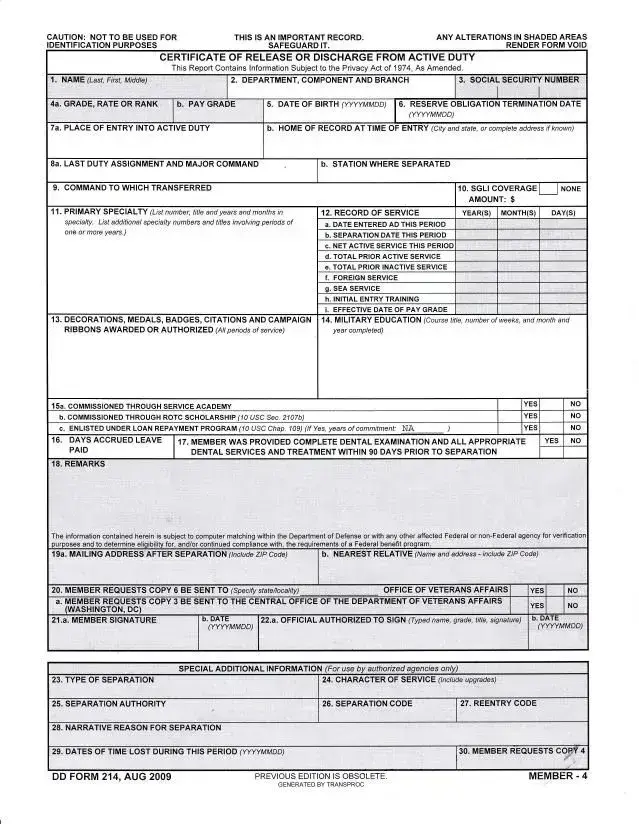What is a DD-214 form?
The DD-214 form, officially titled "Certificate of Release or Discharge from Active Duty," is a document issued by the Department of Defense. It serves as a comprehensive record of a service member's time spent in the military, including details about their rank, dates of service, duty stations, training, medals awarded, reason for discharge, and other vital information. This document is crucial for veterans as it is often required for employment, education, veterans' benefits, and other services targeted towards veterans.
Why is the DD-214 form important?
This form is critical for veterans, acting as a key document to prove military service and the conditions under which they were discharged. Access to veterans' benefits, including healthcare, education benefits, and loan programs, often requires submission of the DD-214. Furthermore, it can be essential for employment opportunities, membership in veterans' organizations, and obtaining government ID cards designated for veterans.
How can one obtain a replacement DD-214?
If a veteran's DD-214 is lost or damaged, a replacement can be requested through the National Archives’ National Personnel Records Center (NPRC). Veterans or their next of kin can submit a request online via the eVetRecs system, by mail using Standard Form SF-180, or in certain cases, through fax. It's important to provide as much information as possible to facilitate the search for the records.
Can any changes or corrections be made to a DD-214?
Yes, changes or corrections can be requested if there are errors or omissions on the original DD-214. This process is initiated by filing a DD Form 215, Correction to DD Form 214, Certificate of Release or Discharge from Active Duty. It’s necessary for the request to include evidence supporting the need for correction. These requests are processed through the appropriate service department.
What are the consequences of altering a DD-214?
Altering a DD-214 form is illegal and can result in severe penalties, including fines and imprisonment. It's considered a fraudulent act to change or add unauthorized information on this official document. Veterans caught altering their DD-214 risk losing their veterans' benefits and could face criminal charges.
Is there a digital version of the DD-214 available?
As of the latest updates, digital copies of the DD-214 can be obtained and stored through the eBenefits portal, a joint VA/DoD web portal that provides resources and self-service capabilities to veterans and active duty service members. These digital copies are accepted for most purposes that require verification of military service and discharge status.
What information is needed to request a DD-214?
When requesting a copy of a DD-214, having specific information on hand can streamline the process. Critical details include the veteran's full name, Social Security Number, branch of service, dates of service, and date and place of birth. Additionally, if possible, providing the service number and the reason for the request will aid in the retrieval process.
Who is entitled to receive a copy of a DD-214?
Primarily, the veteran themselves or their next of kin, in case the veteran is deceased, are entitled to request and receive a copy of the DD-214. Next of kin includes the surviving spouse that has not remarried, children, parents, or siblings of the deceased veteran. Authorized third parties may also request a copy with the consent of the veteran or the next of kin.
How long does it take to receive a replacement DD-214?
The time it takes to receive a replacement DD-214 can vary significantly depending on the records’ accessibility and the completeness of the request. Typically, requests are processed within 10 days to several weeks. Some requests, especially those involving older records that require more extensive search efforts, may take longer. In cases of emergency, such as imminent homelessness or hospitalization, veterans can note the urgency in their request for expedited processing.

